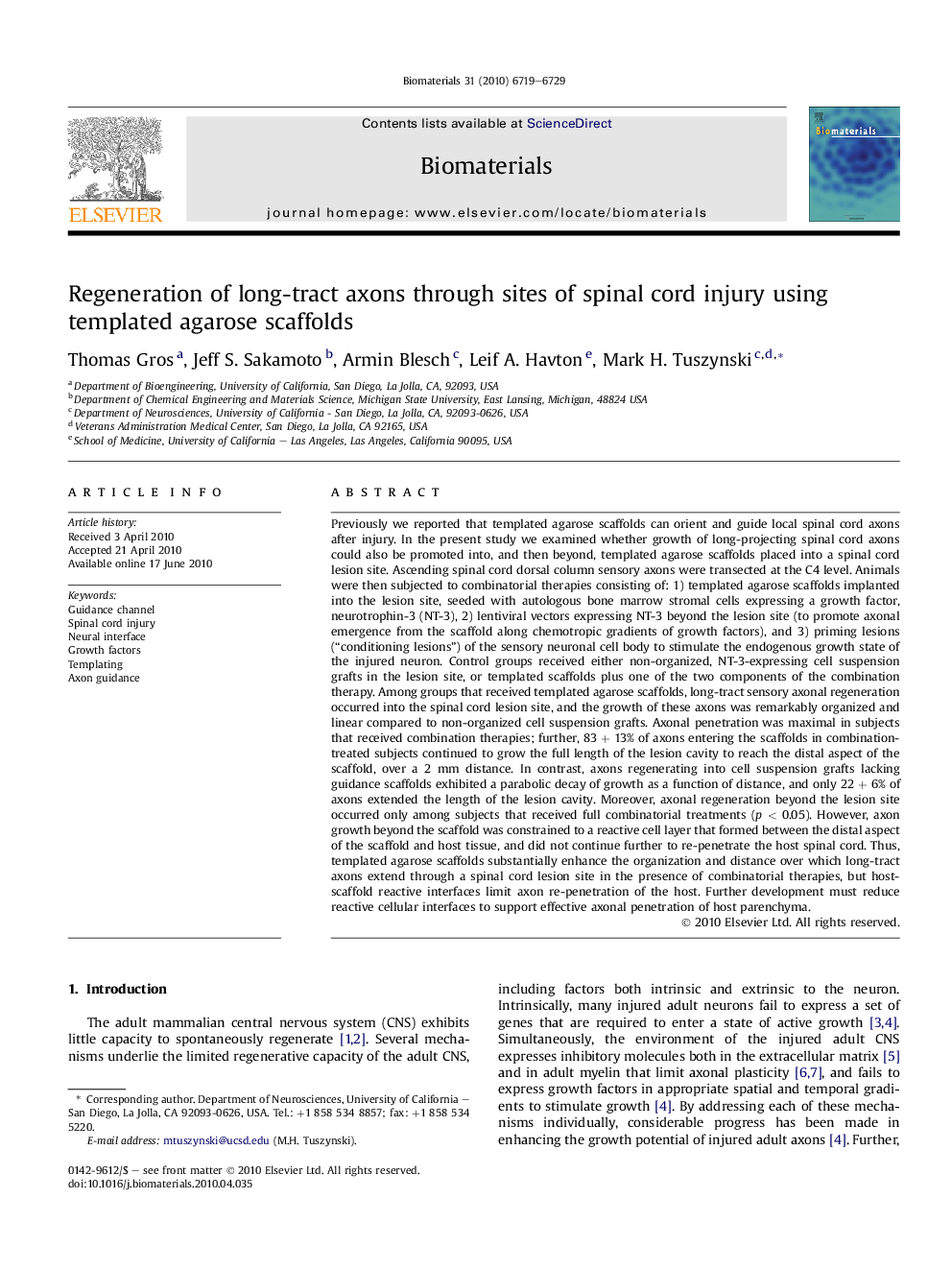| کد مقاله | کد نشریه | سال انتشار | مقاله انگلیسی | نسخه تمام متن |
|---|---|---|---|---|
| 8707 | 603 | 2010 | 11 صفحه PDF | دانلود رایگان |

Previously we reported that templated agarose scaffolds can orient and guide local spinal cord axons after injury. In the present study we examined whether growth of long-projecting spinal cord axons could also be promoted into, and then beyond, templated agarose scaffolds placed into a spinal cord lesion site. Ascending spinal cord dorsal column sensory axons were transected at the C4 level. Animals were then subjected to combinatorial therapies consisting of: 1) templated agarose scaffolds implanted into the lesion site, seeded with autologous bone marrow stromal cells expressing a growth factor, neurotrophin-3 (NT-3), 2) lentiviral vectors expressing NT-3 beyond the lesion site (to promote axonal emergence from the scaffold along chemotropic gradients of growth factors), and 3) priming lesions (“conditioning lesions”) of the sensory neuronal cell body to stimulate the endogenous growth state of the injured neuron. Control groups received either non-organized, NT-3-expressing cell suspension grafts in the lesion site, or templated scaffolds plus one of the two components of the combination therapy. Among groups that received templated agarose scaffolds, long-tract sensory axonal regeneration occurred into the spinal cord lesion site, and the growth of these axons was remarkably organized and linear compared to non-organized cell suspension grafts. Axonal penetration was maximal in subjects that received combination therapies; further, 83 + 13% of axons entering the scaffolds in combination-treated subjects continued to grow the full length of the lesion cavity to reach the distal aspect of the scaffold, over a 2 mm distance. In contrast, axons regenerating into cell suspension grafts lacking guidance scaffolds exhibited a parabolic decay of growth as a function of distance, and only 22 + 6% of axons extended the length of the lesion cavity. Moreover, axonal regeneration beyond the lesion site occurred only among subjects that received full combinatorial treatments (p < 0.05). However, axon growth beyond the scaffold was constrained to a reactive cell layer that formed between the distal aspect of the scaffold and host tissue, and did not continue further to re-penetrate the host spinal cord. Thus, templated agarose scaffolds substantially enhance the organization and distance over which long-tract axons extend through a spinal cord lesion site in the presence of combinatorial therapies, but host-scaffold reactive interfaces limit axon re-penetration of the host. Further development must reduce reactive cellular interfaces to support effective axonal penetration of host parenchyma.
Journal: Biomaterials - Volume 31, Issue 26, September 2010, Pages 6719–6729